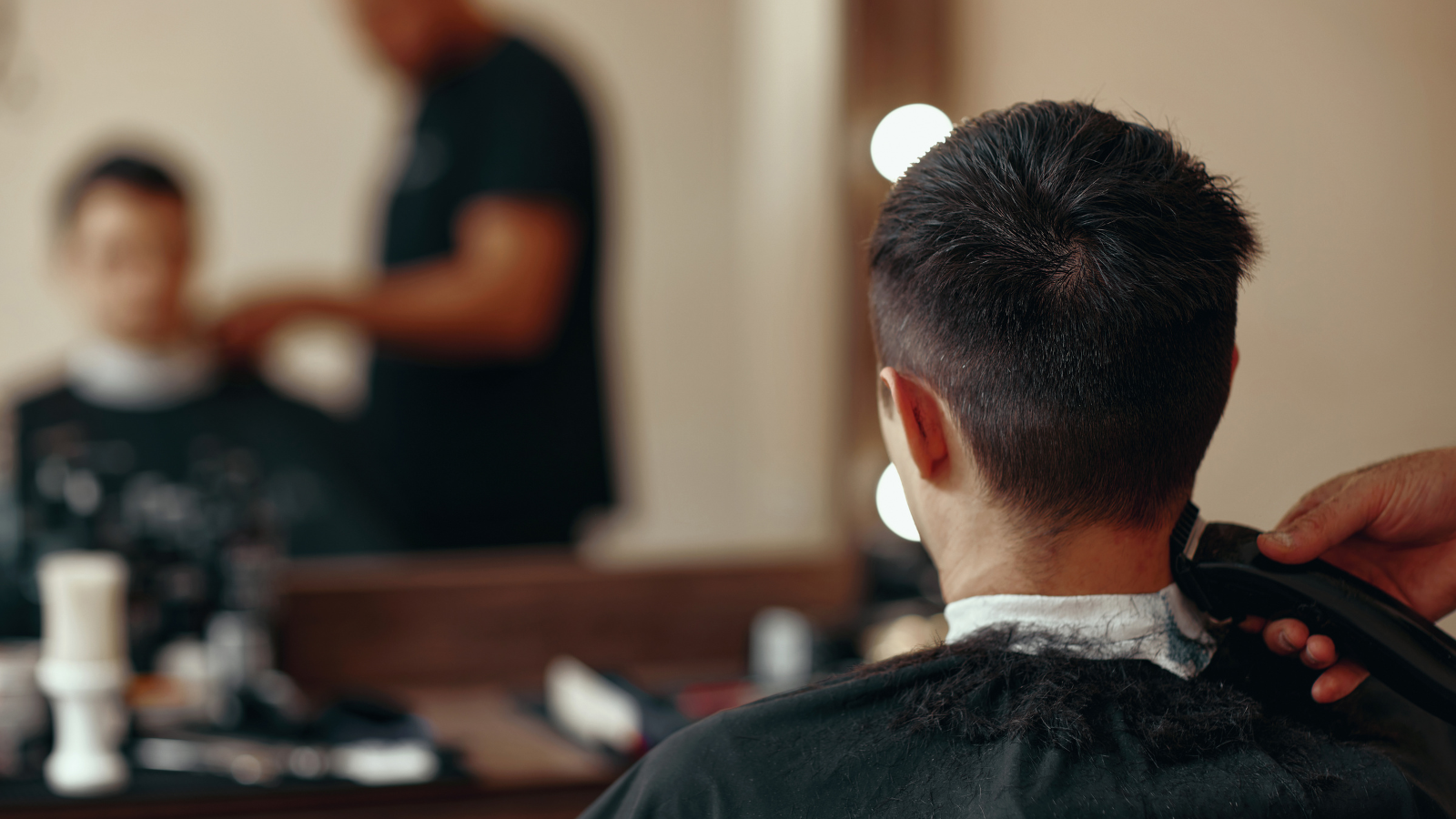Tonic masculinity: part 2
This is the second part of a two-part article. Part 1 can be found here.
To better understand essential masculinity—what I am here calling tonic masculinity—it is important to recall that the male is a variant of the undifferentiated human being. It is a “female” (marked by the so-called X sex chromosome) with some genetic material missing (yielding the Y sex chromosome). This has contributed to males having evolved to be somewhat larger than females. They possess a higher concentration of striated muscle fiber, greater shoulder width and more narrow pelvic circumference, larger hands and feet, and a higher center of gravity when standing. Their gonads (testes) have moved outside of their body by the ninth month postpartum, which makes these highly sensitive organs more vulnerable to injury than the female’s gonads (ovaries). Temperamentally, males are known to be more active and more difficult to comfort during infancy than girls. The penis seems to have a life of its own, responding to both inner abdominal pressures and external stimulation. Orgasm with ejaculation, which signals sexual maturity, is a powerful whole-body experience that all boys at first find to be uncanny and overwhelming. It is symbolic of the generally more powerful bursts of energy boys are well known to display, playing themselves out over short periods of intense activity. Such urges are difficult to control and give the male a sense of power that surprises him as it builds slowly, only to disappear instantly when orgasm has occurred. This experience is a model for the male’s other highly driven acts, but they are seriously misinterpreted as being violent.
“Essential masculinity is based on these anatomical givens. A few sorties of American gender politics will not change it without causing tremendous confusion in women and men, for the most part based on having to pretend that what one feels is not real”
Ejaculation is as little violent as the male’s penetration of the female in the sex act. It is simply the way mammalian sex occurs, which requires the initiation and completion of the act by the male. It does not preclude the grasping action of the powerful vaginal muscles when the female is receptive to sexuality. It should be also be recalled that mammalian sexual economy has evolved so that the female chooses the male for mating based on her perception of her sex partner as healthy. Males have evolved to be lively and vigorous, precisely to show that they are healthy. Health is vigor, not violence. The thrusting and penetrating movements of intercourse are a fact of nature and not acts of aggression, as some have argued who adduce this behavior as yet another example of hegemonic, toxic masculinity. It is as little violent as masticating might be construed as violence against what is being ingested.
“One such myth is that of toxic masculinity, which we must now admit can also occur in females. The confusion it has introduced into schooling and public policy is only beginning to be assessed. If we can clear away some of the dense smoke of what a very small fire has produced, I believe we will see clearly the image of tonic masculinity as briefly described here coming into focus.”
Essential masculinity is based on these anatomical givens. A few sorties of American gender politics will not change it without causing tremendous confusion in women and men, for the most part based on having to pretend that what one feels is not real. Since such trends have been under way—that is, for nearly a half-century—they have generated myths about most men that apply, however, to only a very few very powerful and wealthy men (and a few women). One such myth is that of toxic masculinity, which we must now admit can also occur in females. The confusion it has introduced into schooling and public policy is only beginning to be assessed. If we can clear away some of the dense smoke of what a very small fire has produced, I believe we will see clearly the image of tonic masculinity as briefly described here coming into focus. Meanwhile, successful women have a feeling of riding high and well they should since the responsibilities that come with work in business and the professions which was for a long time solely men’s work is now increasingly in women’s hands. In addition to bearing children, females are charged with seeing to the outcome of the near future in politics, morality and our major economic institutions.
This brings me to a final value of tonic masculinity as I see it emerging. And that is the work to be done of restoring harmony between the sexes, to return relations in the nuclear family and local community to a degree of genuinely democratic responsibility and caring for the other. The much advertised dissonance of relations between men and women, I believe, will be resolved by tonic masculinity as described. We should not be surprised, since the female’s essential creativity—child-bearing—has from the start been envied by men. The result of that longing to do something as remarkable and mysterious as create another human life can be seen in tonic masculinity as it has assiduously pursued its goals through history. Tonic masculinity, centering and harmonizing, is the masculinity of most males, not that of a few whom history has recorded as its leaders, those few men who have very likely sacrificed more men than women on their rampages.
Postscript
“Whether at home or your office, the physical environment in which you find yourself was built by men. Men hauled and hoisted the beams of the building you are sitting in, laid the brick, built the walls, installed the mechanicals, built the stairways, put down the tiles or carpet, and moved the furniture into place”
You are probably reading this indoors, in your house or apartment. You are likely reading it on a laptop screen.
At a time when much employment and quite a lot of leisure involves such a device, it is worth recalling that men designed it, its architecture and software. Having launched the communications satellites and built the transmission towers that relay their signals, men made the device viable, receiving and transmitting data. Men also installed the vast cable systems overhead and underground that connect us for business and social purposes via the internet. They ran the coaxial cable to your house.
Whether at home or your office, the physical environment in which you find yourself was built by men. Men hauled and hoisted the beams of the building you are sitting in, laid the brick, built the walls, installed the mechanicals, built the stairways, put down the tiles or carpet, and moved the furniture into place, including the bed you will have sex on later. As you read this, men are putting up dry wall and installing windows and air-conditioning ductwork and their machinery, painting and plastering walls, sanding floors, installing and repairing plumbing, and resolving computer glitches. If you are in a high rise building, recall that men installed the elevator that lifted you hundreds of feet off the ground to where you are sitting as well as the array of emergency stairways that are there to protect you in the event of an emergency.
As you move from work to home, recall that men dug the tunnels and laid the track for underground and surface mass transit. Men poured the concrete for highways and sidewalks and laid the asphalt for the streets you drive, bicycle, or walk on. They keep the subways and buses operating and repair your automobiles, which they designed. They keep freight and passenger trains moving. Most long-distance and local truck drivers are men. Men built the first seagoing ships and then airships and the airports where thousands of flights now take off and land each day throughout the world. Most pilots are still men.
They built the systems that make the comforts of modern life possible, from reservoirs to the massive conduits that deliver their water to us. They built the underground drainage passages that prevent flooding and sewerage systems that receive our waste. They remove snow and damaged vehicles from roads, and set railroad cars back on track. In most cities, men drive the buses and taxis.
As you read this, men are lifting and handling millions of heavy parcels and boxes they have unloaded from trucks, boats and trains and have delivered to storage areas. They stack the shelves of supermarkets and other retail outlets. They deliver groceries on bicycle in big cities such as New York. They haul and lift the bags of garbage from your streets in every imaginable climate.
Men lift and move the dead weight of heavy patients in hospitals and nursing homes. Male orthopedic surgeons reduce fractures of large bones and screw together hip bones, procedures that require large hands and upper body strength.
Men carry people out of burning buildings and bring those who are intoxicated under control in emergency rooms. They are sent out to control rowdy crowds and mediate in civil disputes. Not many men are being killed in wars these days, but throughout history millions of mostly young men have been sent out to fight and die on front lines for a handful of raging dictators, who mistakenly have served historians as the model for most men. They are the guards and bodyguards of public buildings and powerful and wealthy women and men, whose properties they landscape. Men operate the heavy equipment on farms. They manage and slaughter cattle, mine metals, log trees for lumber, and serve as crews on cargo ships. In factories they often labor only yards away from fiery furnaces. They invented glass and, on Murano, a few still hand-blow masterpieces of transparent, sparkling beauty.
These are males from about age 20 to 60. In bygone days they were as young as ten years old and worked next to their brothers, fathers, uncles and grandfathers in mines and factories and on farms. While technology is making much hands-on work less backbreaking, as long as it required it will be carried out by male bodies for the simple reason that given the number of striated muscle fibers and more numerous nuclei in the muscles of their upper and lower limbs, such bodies are on the whole much stronger than female bodies, regardless of stature. Large hands and feet, wider upper body breadth, and a higher center of gravity optimize the strength. And yet . . . to be male and to have such a body, we hear, is to exert a poisonous influence in society. The male body is the emblem of so-called toxic masculinity. How could this have happened?
These few reflections in part 1 of this article and here have attempted to suggest how the notion originated and to provide a much needed tonic—a pharmakon—for the unease the notion of so-called toxic masculinity has come to plague us.
Scroll down to join the discussion
Disclaimer: This article is for information purposes only and is not a substitute for therapy, legal advice, or other professional opinion. Never disregard such advice because of this article or anything else you have read from the Centre for Male Psychology. The views expressed here do not necessarily reflect those of, or are endorsed by, The Centre for Male Psychology, and we cannot be held responsible for these views. Read our full disclaimer here.
Like our articles?
Click here to subscribe to our FREE newsletter and be first
to hear about news, events, and publications.
Have you got something to say?
Check out our submissions page to find out how to write for us.
.















































